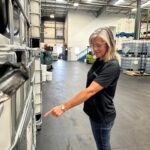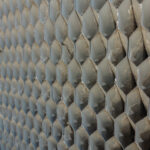Cooling Tower Start-Up For Success
These critical issues are all linked to three detrimental problems going on inside your cooling system:
-
Corrosion – water is naturally corrosive to metal, so corrosion inhibitors are necessary for the system to operate correctly.
-
Deposition – deposits in the form of scale negatively impact heat transfer, causing the system to use more energy to produce the same amount of cooling.
-
Fouling – other foulants rob the system of equipment efficiency as well, and when biologically based, can have negative health repercussions in buildings where people work.
Having a well thought-out start-up program in place helps prepare your system for a season of minimum problems.
Here are 4 simple steps to proper cooling tower start-up.
Start With a Clean System
Long-term storage and winter lay-ups can result in an accumulation of dirt, debris and stagnant water inside the tower and associated system piping. The first step to a safe and effective cooling system start-up is to go all the way back to the fall when the system was shut down. An effective layup program for the off season is just as important for protecting your system as your regular treatment program is during operation. If there is significant visual evidence of deposition and fouling, such as the presence of algae or piles of debris, physically remove them and drain/flush the equipment where practical.
Charge the Inhibitor When Filling
Some facilities will do a dry layup as opposed to a wet layup. If you have done a dry layup, the system must be properly charged with chemical to establish proper treatment levels. When you refill the system with fresh water, we recommend adding one, to one and a half times, the normal level of your regular inhibitor treatment products to establish an initial charge. Circulate the solution as needed for complete distribution through the system.
Properly Add Biocides
The environment inside the tower is ideal for bacteria growth and the proliferation of other microorganisms. Other components of your system may also have the ability to add “bug” food to the system to further drive bacterial growth. All of these factors can contribute to the formation of biofilms, which can adversely effect the performance and efficiency of the system. Biofilms can accumulate quickly, so if the system is only operated intermittently during the “shoulder” seasons of spring and fall, biocides must be added weekly and circulated for at least two hours upon adding in order to maintain proper biocontrol. Of course, once the system is operating continuously during the summer, it is much easier to establish and maintain a proper and regular biocide feed schedule.
Start Slow
As you start your system, operate the tower with fewer cycles than normal in order to keep the level of particulates and foulants relatively low as compared to when the system is operating continuously. Some of this particulate can settle in pipes and heat exchangers when the system is down, forming potential sites for corrosion and biological growth. Additional dispersant can help by keeping any particulate matter in suspension rather than letting it accumulate in pipes and equipment.
Following these steps can enhance performance and eliminate unneeded expenses in the long run. Asset protection, safety and savings are at the core of why you need a proven start-up program for your cooling tower system. Additionally, maintaining a good treatment program for your system saves water and energy, and helps protect the equipment.
Contact a QualiChem Water Treatment Expert today to find out how to manage your cooling tower efficiently and avoid major problems.
{{cta(‘db25c21d-bb74-4721-b980-7a2e0b7ca8a9’)}}



